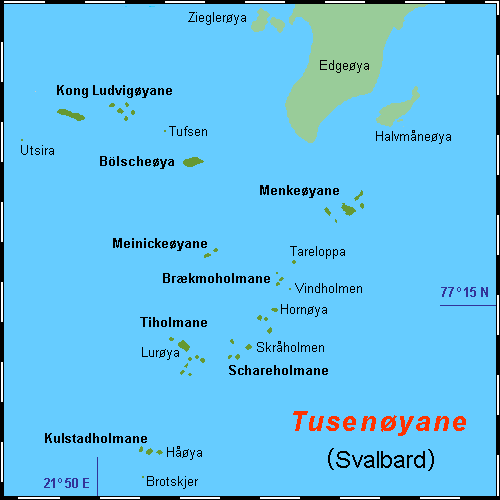|
Spunset
Spunset ( en, The Bung) is a small islet between Langåra and Bommen in Tiholmane Tiholmane ( en, "Ten Islands" or "Ten Islets") is a group of ten small islands that form part of Thousand Islands, an archipelago south of Edgeøya in Svalbard. The largest of the islands are Lurøya, Kalvøya, Langåra Langåra is one of the is ..., part of Thousand Islands, an archipelago south of Edgeøya. References * Norwegian Polar InstitutPlace Names of Svalbard Database Islands of Svalbard {{svalbard-geo-stub ... [...More Info...] [...Related Items...] OR: [Wikipedia] [Google] [Baidu] |
Tiholmane
Tiholmane ( en, "Ten Islands" or "Ten Islets") is a group of ten small islands that form part of Thousand Islands, an archipelago south of Edgeøya in Svalbard. The largest of the islands are Lurøya, Kalvøya, Langåra Langåra is one of the islands comprising Tiholmane, part of Thousand Islands, an island group south of Edgeøya. It is named after an island in Oslofjorden, Norway Norway, officially the Kingdom of Norway, is a Nordic country in Northe ... and Rugla. The group also includes the smaller Sperra, Spunset, Bommen, Proppen, Rullesteinøya and Røysholmen. References * Norwegian Polar InstitutPlace Names of Svalbard Database Islands of Svalbard {{svalbard-geo-stub ... [...More Info...] [...Related Items...] OR: [Wikipedia] [Google] [Baidu] |
Langåra
Langåra is one of the islands comprising Tiholmane, part of Thousand Islands, an island group south of Edgeøya. It is named after an island in Oslofjorden, Norway Norway, officially the Kingdom of Norway, is a Nordic country in Northern Europe, the mainland territory of which comprises the western and northernmost portion of the Scandinavian Peninsula. The remote Arctic island of Jan Mayen and the .... References * Norwegian Polar InstitutPlace Names of Svalbard Database Islands of Svalbard {{svalbard-geo-stub ... [...More Info...] [...Related Items...] OR: [Wikipedia] [Google] [Baidu] |
Bommen
Bommen is a village in the canton of Thurgau, Switzerland. It was first recorded in year 1348 as ''Boumen''. Bommer Weiher is located north of the village. Bommen is located in the former municipality Alterswilen. In 1996 Alterswilen municipality merged with its neighbor to form a new and larger municipality Kemmental Kemmental is a municipality in the district of Kreuzlingen in the canton of Thurgau in Switzerland. The municipality was formed on 1 January 1996 through the merger of Alterswilen, Hugelshofen, Altishausen, Dotnacht, Ellighausen, Lippoldswile .... References Villages in Thurgau {{Thurgau-geo-stub ... [...More Info...] [...Related Items...] OR: [Wikipedia] [Google] [Baidu] |
Thousand Islands (Svalbard)
Thousand IslandsDodd, G. J., G. P. Benson, & D. T. Watts. 1996. ''Arctic Pilot'', vol. 2. Taunton, UK: Hydrographer of the Navy, p. 225. ( no, Tusenøyane) is a group of small islands south of Edgeøya. They form part of the Svalbard archipelago. The group consists of over forty islands and islets, including Brotskjer, Kulstadholmane, Utsira, Tufsen, Kong Ludvigøyane, Bölscheøya, Hornøya, Tiholmane, Meinickeøyane, Sletteøya, Schareholmane, Skråholmen, Brækmoholmane, Tareloppa, Vindholmen, and Menkeøyane. History The Dutchman Joris Carolus was the first to distinctly mark a group of small islands south of Edgeøya. The Muscovy Company's map (1625) showed a vague mass of islands as well, some labeled, such as ''Wester I.'', ''Beare Iland'', ''Heling I.'', and the ''Hopeless Iles.'' (perhaps Kong Ludvigøyane). The cartographers Gerard Valck and Peter Schenk the Elder were the first to place a "great vague mass of islands stretching round the coast" south of ... [...More Info...] [...Related Items...] OR: [Wikipedia] [Google] [Baidu] |
Edgeøya
Edgeøya (), occasionally anglicised as Edge Island, is a Norwegian island located in southeast of the Svalbard archipelago; with an area of , it is the third-largest island in this archipelago. An Arctic island, it forms part of the Søraust-Svalbard Nature Reserve, home to polar bears and reindeer. An ice field covers its eastern side. The island takes its name from Thomas Edge (died 1624), an English merchant and whaler. It is seldom visited today and development of tourist facilities is forbidden by law because of its nature reserve status. History The history of Edgeøya's discovery has been a matter of dispute. Thomas Edge, writing in 1622, claimed the island was discovered by one of his ships in 1616. However, Joris Carolus, in a map published in 1614 and allegedly based on discoveries made by him the same year, shows what appears to be Edgeøya's south coast. Carolus showed the coastline split into two parts: "Onbekende Cust" (meaning "Unknown Coast" in Dutch) in the wes ... [...More Info...] [...Related Items...] OR: [Wikipedia] [Google] [Baidu] |

